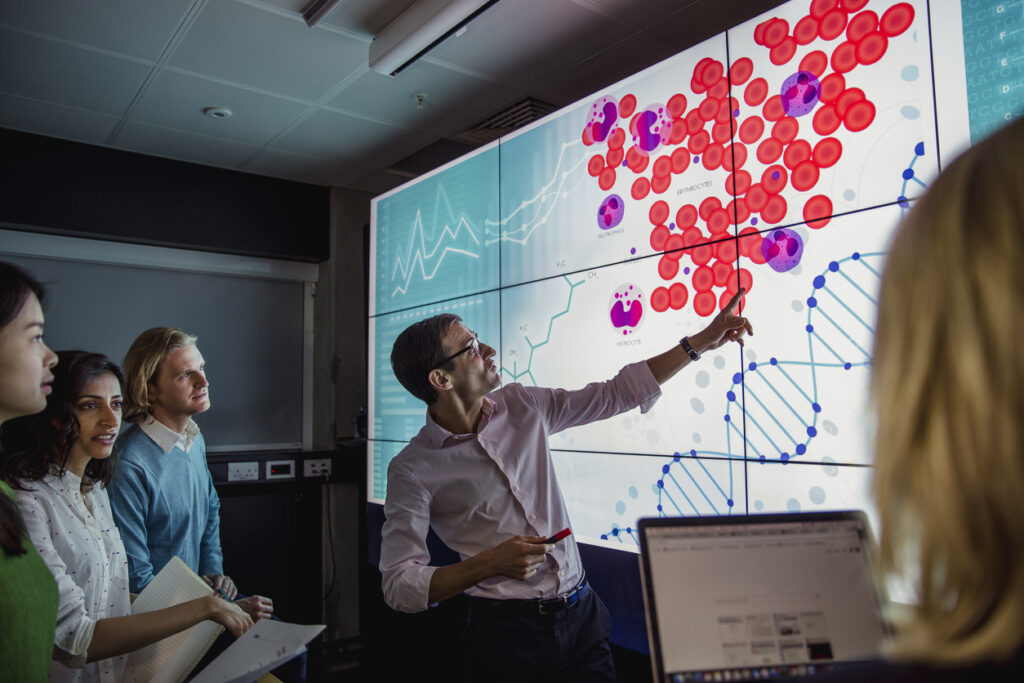We’ve all changed the way we work in recent times and perhaps we’ve even changed the way we’re learning. I’m sure 2020 has brought you far more online, digital and virtual learning experiences than ever before, and more likely than not, many have been conducted in the comfort of your own home. This transformation to digital learning has of course happened because of necessity, the mother of invention, and in this case the mother of change too.
The 21st century has brought with it an in-depth understanding of how the brain works while learning.
The digital transformation many organisations were seeking has happened more swiftly than we ever imagined. In some cases, this change has been resoundingly successful, however for others it has fallen short. In either case, the fact is that ‘digital’ is only the medium – it is not the learning we need to change our habits, attitudes, behaviours or skills.
Learning still happens in the brains and bodies of your colleagues and it still needs to deliver results, whether that’s improved productivity, performance, sales, or sending a rocket to the moon. Learning in the 21st century looks quite different to that of the 20th century and earlier, which is why I think we need a new DNA for learning environments, where everyone grows.
This new DNA has five key strands that interconnect at different levels to create a thriving 21st century learning culture.

People
As always, people are at the heart of any learning experience. Learners must actively contribute to their own success. Designers and trainers must collaborate with subject matter experts to create or curate relevant content delivered using the most effective training techniques. Mentors, coaches, managers and peers must support learners with feedback, challenge and work-based activities to embed skills and change in the workplace. The executive team must value learning as an investment in their people and ensure it’s aligned to organisational needs.
Each and every one of these cohorts has a critical role to play in creating a thriving learning culture. Without each player, your learning culture will fail to take off, no matter how much effort the L&D team put in to creating engaging learning experiences.
Science
The 21st century has also brought with it an in-depth understanding of how the brain works while learning. We can use this knowledge and understanding, and couple it with proven tools and techniques to drive performance in the workplace.
Brain sciences inform the best decisions about physical, cognitive, social and psychological factors for learning, enabling learning designers to create experiences that truly engage learners, allow them to flourish and teaches them a world of possibilities when it comes to new skills, knowledge or information. Plus, when we share this knowledge about brain sciences with learners, we give them an insight into their own brains, improving their innate abilities to learn as a bonus to their new technical knowledge and skills.
Process
I used to think processes were a bit boring and creating something fresh each time was a good tactic. Over the years, however, I’ve learned that if you want to do something well. a process gives you a framework for excellence – and learning is no different.
For years people have used training or instructional processes to design programmes, but what is really required to create a thriving learning culture is a design process based on how people learn to gain mastery of complex knowledge and skills. This type of process means a lot less waste and a lot more control over quality, which is paramount in creating a learning culture that your people will buy into.
Technology
Technology has always played a vital role in learning cultures, but now it’s more sophisticated than ever. As learning professionals, we have an abundance of technology at our disposal, including learning platforms, apps, virtual reality and digital classrooms, to name just a few. These pieces of technology create spaces for content, immersion, repetition and connection, ultimately creating transferable learning experiences for your people, regardless of their location.
Data
Coupled with technology comes data. Technology provides both learners and learning professionals with an abundance of information to fuel learning experience.
As learning designers, we now have an in-depth, accurate insight into our learner’s habits and experiences. By understanding our learners’ behaviour, we can more easily tailor and evolve our resources and materials to their needs. For example, facilitating long-term retention with automated communication – a little nudge in the right direction when they haven’t completed learning, or provision of job aids at the tip of their fingers in the flow of work.
In addition, subjective feedback from learners, mentor, peers and managers adds flavour to the mix and improves technical and meta-learning skills. Data is a source for programmatic assessment to drive successful programme completion, higher competence levels and rapid adoption and application of learning at work. Importantly managers and the organisation can evaluate progress and measure their return on investment.
These are the DNA strands that I believe are vital to a flourishing, adaptive, flexible and modern learning culture. What would you add?
Interested in this topic? Read Why the reinvention of L&D post Covid-19 must start with learning culture.
We’ve all changed the way we work in recent times and perhaps we’ve even changed the way we’re learning. I’m sure 2020 has brought you far more online, digital and virtual learning experiences than ever before, and more likely than not, many have been conducted in the comfort of your own home. This transformation to digital learning has of course happened because of necessity, the mother of invention, and in this case the mother of change too.
The 21st century has brought with it an in-depth understanding of how the brain works while learning.
The digital transformation many organisations were seeking has happened more swiftly than we ever imagined. In some cases, this change has been resoundingly successful, however for others it has fallen short. In either case, the fact is that ‘digital’ is only the medium – it is not the learning we need to change our habits, attitudes, behaviours or skills.
Learning still happens in the brains and bodies of your colleagues and it still needs to deliver results, whether that’s improved productivity, performance, sales, or sending a rocket to the moon. Learning in the 21st century looks quite different to that of the 20th century and earlier, which is why I think we need a new DNA for learning environments, where everyone grows.
This new DNA has five key strands that interconnect at different levels to create a thriving 21st century learning culture.

People
As always, people are at the heart of any learning experience. Learners must actively contribute to their own success. Designers and trainers must collaborate with subject matter experts to create or curate relevant content delivered using the most effective training techniques. Mentors, coaches, managers and peers must support learners with feedback, challenge and work-based activities to embed skills and change in the workplace. The executive team must value learning as an investment in their people and ensure it’s aligned to organisational needs.
Each and every one of these cohorts has a critical role to play in creating a thriving learning culture. Without each player, your learning culture will fail to take off, no matter how much effort the L&D team put in to creating engaging learning experiences.
Science
The 21st century has also brought with it an in-depth understanding of how the brain works while learning. We can use this knowledge and understanding, and couple it with proven tools and techniques to drive performance in the workplace.
Brain sciences inform the best decisions about physical, cognitive, social and psychological factors for learning, enabling learning designers to create experiences that truly engage learners, allow them to flourish and teaches them a world of possibilities when it comes to new skills, knowledge or information. Plus, when we share this knowledge about brain sciences with learners, we give them an insight into their own brains, improving their innate abilities to learn as a bonus to their new technical knowledge and skills.
Process
I used to think processes were a bit boring and creating something fresh each time was a good tactic. Over the years, however, I’ve learned that if you want to do something well. a process gives you a framework for excellence – and learning is no different.
For years people have used training or instructional processes to design programmes, but what is really required to create a thriving learning culture is a design process based on how people learn to gain mastery of complex knowledge and skills. This type of process means a lot less waste and a lot more control over quality, which is paramount in creating a learning culture that your people will buy into.
Technology
Technology has always played a vital role in learning cultures, but now it’s more sophisticated than ever. As learning professionals, we have an abundance of technology at our disposal, including learning platforms, apps, virtual reality and digital classrooms, to name just a few. These pieces of technology create spaces for content, immersion, repetition and connection, ultimately creating transferable learning experiences for your people, regardless of their location.
Data
Coupled with technology comes data. Technology provides both learners and learning professionals with an abundance of information to fuel learning experience.
As learning designers, we now have an in-depth, accurate insight into our learner’s habits and experiences. By understanding our learners’ behaviour, we can more easily tailor and evolve our resources and materials to their needs. For example, facilitating long-term retention with automated communication – a little nudge in the right direction when they haven’t completed learning, or provision of job aids at the tip of their fingers in the flow of work.
In addition, subjective feedback from learners, mentor, peers and managers adds flavour to the mix and improves technical and meta-learning skills. Data is a source for programmatic assessment to drive successful programme completion, higher competence levels and rapid adoption and application of learning at work. Importantly managers and the organisation can evaluate progress and measure their return on investment.
These are the DNA strands that I believe are vital to a flourishing, adaptive, flexible and modern learning culture. What would you add?
Interested in this topic? Read Why the reinvention of L&D post Covid-19 must start with learning culture.





